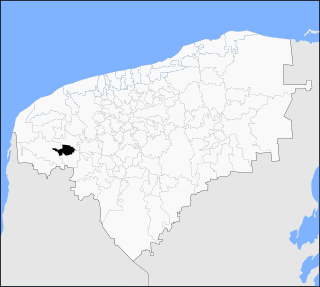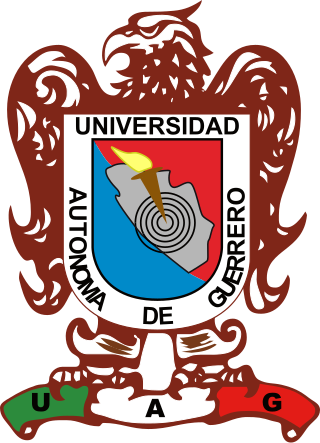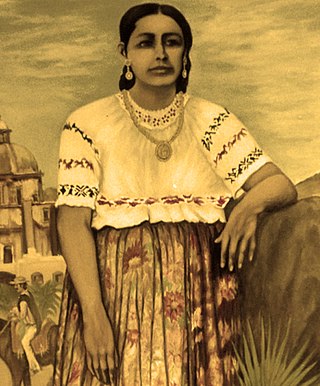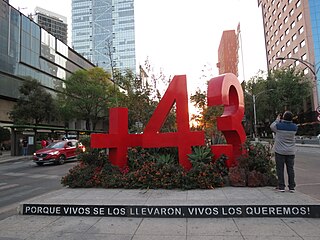
Guerrero, officially the Free and Sovereign State of Guerrero, is one of the 32 states that comprise the 32 Federal Entities of Mexico. It is divided into 81 municipalities. The state has a population of about 3.5 million people. It is located in southwest Mexico and is bordered by the states of Michoacán to the north and west, the State of Mexico and Morelos to the north, Puebla to the northeast and Oaxaca to the east. In addition to the capital city, Chilpancingo and the largest city Acapulco, other cities in Guerrero include Petatlán, Ciudad Altamirano, Taxco, Iguala, Ixtapa, and Zihuatanejo. Today, it is home to a number of indigenous communities, including the Nahuas, Mixtecs, Tlapanecs, Amuzgos, and formerly Cuitlatecs. It is also home to communities of Afro-Mexicans in the Costa Chica region.

Iguala, known officially as Iguala de la Independencia, is a historic city located 102 km (63 mi) from the state capital of Chilpancingo, in the Mexican state of Guerrero in southwestern Mexico.

Maxcanú Municipality is a municipality in the Mexican state of Yucatán. Its seat is the town of Maxcanú. The municipality covers an area of approximately 1,321 km2 and is located roughly 52 km southwest of the city of Mérida.
Amador Lugo Guadarrama was a Mexican painter, graphic artist, writer and cultural promoter, best known for his landscape painting and the founding of several cultural institutions. He began painting when still a child, attending the Escuela al Aire Libre de Pintura in Taxco then developing his career in Mexico City. At that time, the Mexican muralism school was still dominant. Lugo related to its aesthetics but not so much to its politics, so he participated in the founding of various institutions such as the Sociedad Mexicana de Grabadores and the Salón de la Plástica Mexicana which provided opportunities for artists outside the dominant movement. He also worked as an educator, writer and cultural promoter, mostly in Mexico City and his home state of Guerrero.
This is a list of events that happened in 2014 in Mexico. The article also lists the most important political leaders during the year at both federal and state levels.

On September 26, 2014, forty-three male students from the Ayotzinapa Rural Teachers' College disappeared after being forcibly abducted in Iguala, Guerrero, Mexico, in what has been called one of Mexico’s most infamous human rights cases. They were allegedly taken into custody by local police officers from Iguala and Cocula in collusion with organised crime, with later evidence implicating the Mexican Army. Officials have concluded there is no indication the students are alive, but as of 2024, only three students' remains have been identified and their deaths confirmed.
Raúl Isidro Burgos Rural Normal School, commonly known as the Ayotzinapa Rural Normal School, is a men’s normal school, located in the municipality of Tixtla, Guerrero, Mexico. The school is part of the rural teacher's education system that was created as part of an ambitious mass education plan implemented by the state in the 1920s. Moisés Sáenz was the head of the Secretariat of Public Education at the time of the school’s creation. The project for rural teachers' normal schools had a strong component of social transformation, which has made it a hotbed for social movements. In that sense, Ayotzinapa Rural Normal School is where important figures such as Lucio Cabañas Barrientos and Genaro Vázquez Rojas were educated and later on led important guerrilla movements in the state of Guerrero during the 20th century.

Herminio Wenceslao Chávez Guerrero was a Mexican teacher, historian, man of letters, and playwright. His works and teaching activities earned him many awards nationally and internationally.

Sudzal Municipality is a municipality in the Mexican state of Yucatán. It is located about 75 km east of the city of Mérida. Its area is 436.87 km2.

Hoctún Municipality is a municipality in the Mexican state of Yucatán containing (123.91 km2) of land and located roughly 45 km east of the city of Mérida.

Tahmek Municipality is a municipality in the Mexican state of Yucatán containing (139.24 km2) of land and located roughly 39 km southeast of the city of Mérida.

Mocochá Municipality is a municipality in the Mexican state of Yucatán containing 57.48 square kilometres (22.19 sq mi) of land and located roughly 25 kilometres (16 mi) northeast of the city of Mérida.

Sinanché Municipality is a municipality in the Mexican state of Yucatán containing 131.57 square kilometres (50.80 sq mi) of land and located roughly 60 kilometres (37 mi) northeast of the city of Mérida.

Muna Municipality is a municipality in the Mexican state of Yucatán containing (270.81 km2) of land and is located roughly 50 km south of the city of Mérida.

Kopomá Municipality is a municipality in the Mexican state of Yucatán containing (260.59 km2) of land and is located roughly 50 kilometres (31 mi) southwest of the city of Mérida.

Leonardo Bravo was a Mexican liberal, landowner, and general. He was the brother of Máximo Bravo and father of Nicolás Bravo. Bravo participated with the insurgent faction during the development of the armed movement of the first stage of the Independence of Mexico.

The Autonomous University of Guerrero is a public and autonomous institution of secondary education and higher education in the Mexican state of Guerrero. Its main campus is in Chilpancingo, with facilities in Acapulco, Taxco, Iguala, Tixtla, Ometepec, Tecpan de Galeana, Altamirano and other cities in the state.

Antonia Nava de Catalán was a woman involved in the Mexican War of Independence. She accompanied her husband, a volunteer who rose to the rank of colonel, throughout the war. Three of her sons were killed in the struggle. She is remembered for her willingness to sacrifice her family and herself to achieve independence from Spain, and came to be known as "La Generala". She fought alongside Jose Maria Morales until her death.

María Guadalupe Murguía Gutiérrez is a Mexican lawyer and politician of the National Action Party (PAN). She is a national senator for the state of Querétaro. She has held several public positions in Querétaro state government, and was the President of the Chamber of Deputies of Mexico from March to September 2017.

An antimonumento was installed in front of the Superior Court of Justice of Mexico City, on the median strip of Paseo de la Reforma Avenue, in the Cuauhtémoc borough of Mexico City. The work included the installation of a red number 43 made of metal along with a plus symbol, in reference to the forty-three students kidnapped—and possibly killed—in Iguala, Guerrero, in 2014 after being arrested for allegedly committing criminal offenses, plus the six students and witnesses killed during that event, and to honor the more than 150,000 people killed since the start of the Mexican drug war and the 30,000 disappeared persons reported by 2015. The anti-monument was installed by peaceful protesters during a demonstration on 26 April 2015 as a plea for justice and to prevent the case from being forgotten by the authorities and society. The sculpture became the first of its kind in Mexico and would inspire the installation of other guerrilla-like memorials throughout the city and in other states of the country.
















